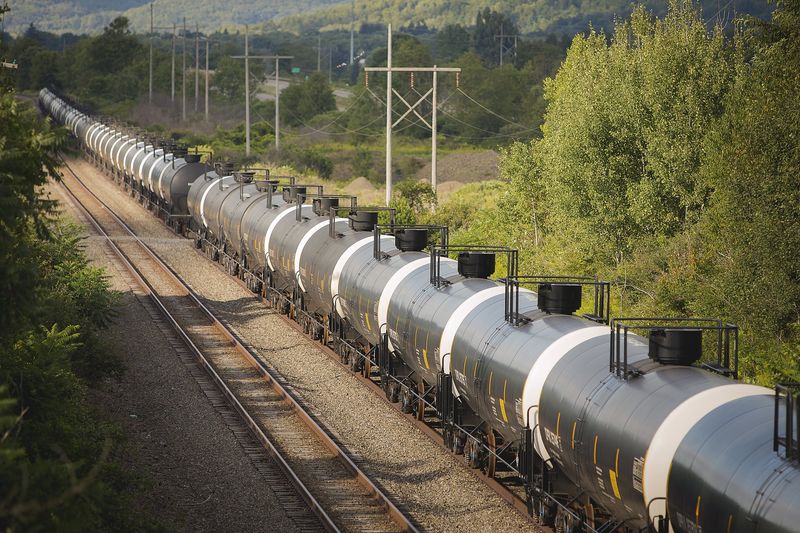By Peter Nurse
Investing.com -- Crude oil prices fell Thursday, falling back from multi-year highs weighed by a stronger dollar after the Federal Reserve hinted at earlier than expected interest rate rises.
By 9:20 AM ET (1320 GMT), U.S. crude was down 0.1% at $72.10 a barrel, after reaching its highest since October 2018, while Brent was down 0.2% at $74.28, down from its highest since April 2019 on Wednesday.
U.S. Gasoline RBOB Futures were up 0.5% at $2.1675 a gallon.
The Federal Reserve concluded its latest two-day meeting on Wednesday, with its policy makers pointing to two interest rate hikes of 25 basis points in 2023, a year earlier than expected.
This unexpected turn of events resulted in the dollar climbing to levels not seen for around two months, with the dollar index up 0.7% on the day, having surged nearly 1% overnight, its biggest rise since March of last year.
A stronger dollar makes oil, priced in the U.S. currency, more expensive in other currencies, potentially weighing on demand.
Also weighing was the news that domestic air passenger travel in India, the third largest importer of oil in the world, plummeted in May as strict Covid-19 lockdowns and restrictions hit demand.
Passenger traffic totaled 2.12 million last month, down by 63% from April and by over 80% from pre-pandemic levels in May 2019, according to data from the Directorate General of Civil Aviation.
That said, losses Thursday aren’t substantial, especially given the extent of the runup this year, with the number of Americans filing new claims for unemployment benefits rising last week for the first time in more than a month, suggesting the U.S. labor market recovery will be volatile.
Additionally, U.S. crude oil stockpiles dropped sharply last week, falling by 7.355 million barrels for the week to Jun. 11, according to the Energy Information Administration, as refineries boosted operations to their highest since January 2020, pointing to hefty domestic demand.
“This leaves U.S. crude inventories at 467MMbbls, which is a little more than 5% below the 5-year average for this stage in the year.” said analysts at ING, in a research note.
